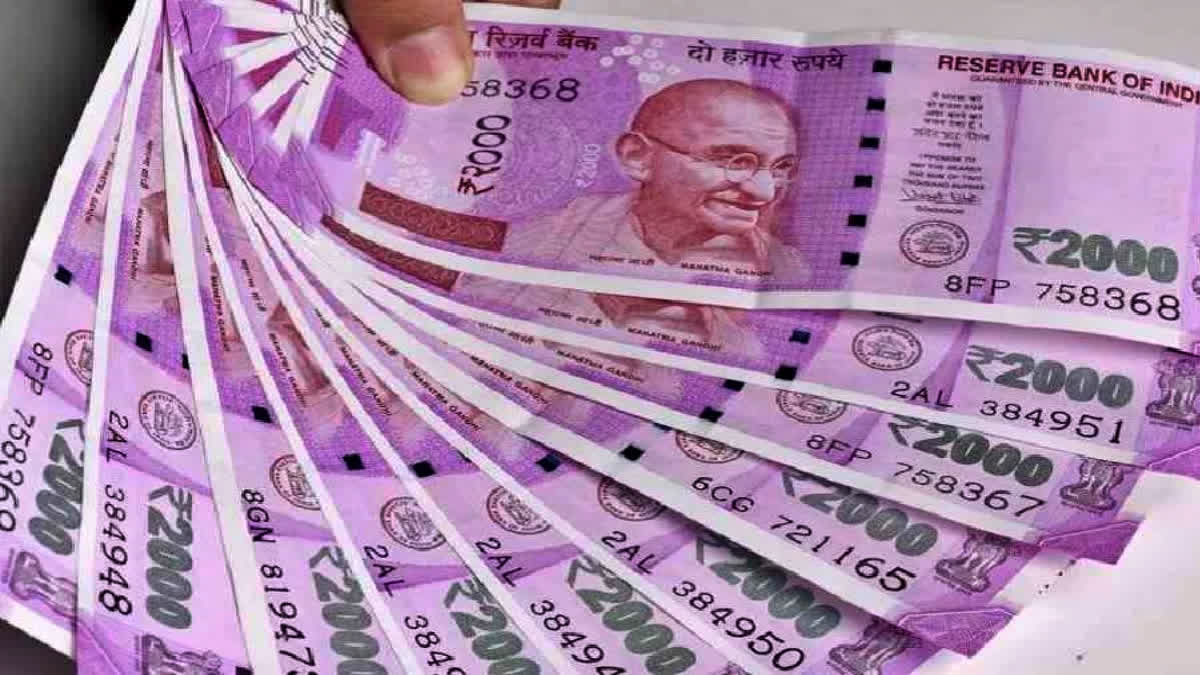New Delhi:The Reserve Bank of India’s announcement to withdraw Rs 2,000 bank notes from circulation on May 19 this year has revealed certain interesting facts about the consumption and banking behaviour of Indians on how they deal with such policy shocks at the individual level.
The latest data showed that the majority of the Rs 2,000 notes have come back to the banking system in the form of deposits and only a small part of it was exchanged in smaller currency notes over the counter. The data analysed by the State Bank of India’s economic research unit showed that the total value of Rs 2,000 bank notes was Rs 3.62 lakh crore at the time of withdrawal announcement.
The data showed that Rs 2,000 bank notes worth Rs 3.08 lakh crore have been deposited into the banks, which is 85 per cent in terms of the value of withdrawn notes. Only a small fraction, Rs 2,000 bank notes worth Rs 54,000 crore have been exchanged into smaller denomination currency notes, which is just 15 per cent of the total value of withdrawn notes.
If one analyses the data then it showed that the biggest chunk of bank deposits of withdrawn notes was not in savings accounts but in current accounts which showed that the holders of Rs 2,000 bank notes used them at commercial establishments such as petrol pumps and on payment of e-commerce sites in cash-on-delivery mode.
40% deposits of Rs 2,000 notes went into current accounts
The data showed that out of Rs 3.08 lakh crore worth of bank deposits, deposits worth Rs 1.23 lakh crore were in current accounts, which is 40 per cent of total deposits of Rs 2,000 bank notes after their withdrawal. It is followed by deposits in savings accounts where the value of deposits has been estimated at around Rs 92,000 crore which is 30% of the total deposits of Rs 3.08 lakh crore.
A similar amount of bank notes worth Rs 92,000 was deposited in loan accounts, which is also 30% of the total value of deposited Rs 2,000 banknotes. As discussed earlier, the value of Rs 2,000 notes deposited in current accounts exceeds both the value of Rs 2,000 banknotes deposited in loan or saving accounts, it showed that rather than visiting the bank branches, holders of Rs 2,000 banknotes decided to spend them on consumption rather than directly depositing the withdrawn currency into the banking system.
Rs 2,000 notes used in buying fuel, cash on delivery
According to the data analysed by SBI Research Team, cash transactions at petrol pumps have risen sharply and cash-paying customers are using Rs 2,000 banknotes. The All India Petroleum Dealers Association has said that digital payments, which used to be 40% of daily sales at pumps, have dropped to 10% while cash sales have increased dramatically.
E-commerce buyers that use cash-on-delivery as a preferred mode of payment have been using Rs 2,000 bank notes for making payments. For example, it has been reported that nearly 75 per cent users of the food delivery service Zomato, who opt for the cash-on-delivery option, have been making payments in Rs 2,000 banknotes.
Another big use for Rs 2,000 banknotes is in high-value purchases of real estate and gold and jewellery items and Rs 2,000 bank notes have also been used in giving donations to temples and other religious institutions.
